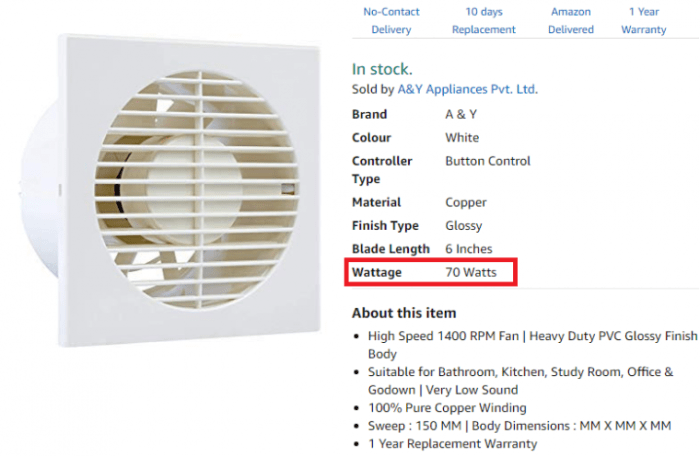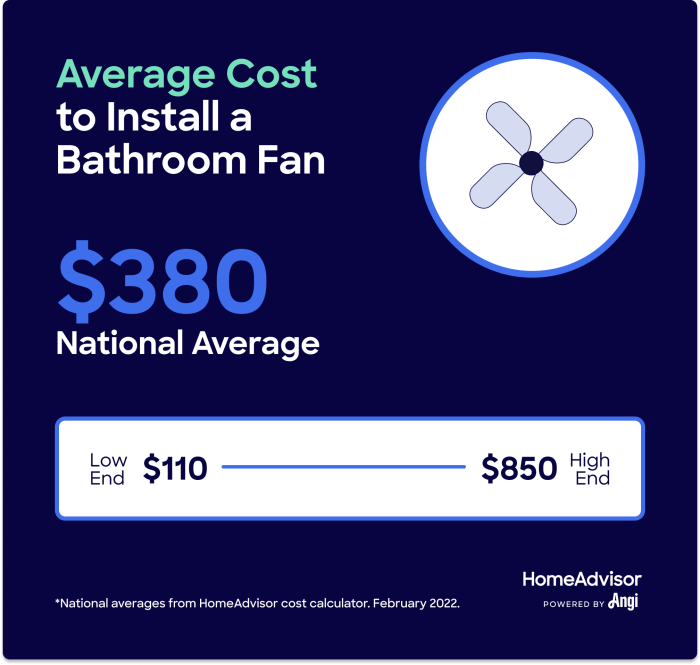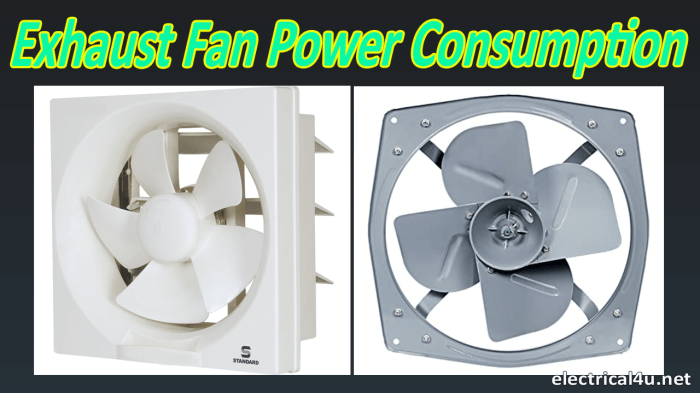Bathroom exhaust fans play a crucial role in maintaining indoor air quality and removing moisture, but they can also contribute to your energy consumption. Understanding the energy consumption ratings of bathroom exhaust fans is essential for making informed choices that balance ventilation needs with energy efficiency.
This guide will delve into the significance of energy efficiency ratings, their impact on energy consumption, considerations for selecting the right fan, and emerging trends in this area.
Energy efficiency ratings provide a standardized way to compare the energy consumption of different bathroom exhaust fans. These ratings are typically expressed in cubic feet per minute (CFM) per watt (W), indicating the airflow capacity of the fan relative to its energy usage.
A higher CFM/W rating indicates greater energy efficiency, as the fan can move more air while consuming less energy.
Energy Efficiency Ratings
Energy efficiency ratings provide valuable information about the energy consumption of bathroom exhaust fans. Understanding these ratings is crucial for making informed decisions about the most energy-efficient and cost-effective fan for your needs.
There are several energy efficiency rating systems used for bathroom exhaust fans, including:
Energy Star Certification
- Energy Star is a voluntary certification program that identifies products that meet certain energy efficiency standards.
- Energy Star-certified bathroom exhaust fans must meet specific energy consumption limits, ensuring they operate efficiently and save energy.
HVI Certification
- The Home Ventilating Institute (HVI) is an independent organization that certifies bathroom exhaust fans based on their performance and energy efficiency.
- HVI-certified fans are tested and rated according to their airflow capacity, sound level, and energy consumption.
The energy consumption of bathroom exhaust fans is influenced by several factors, including:
Fan Size
- Larger fans typically consume more energy than smaller fans.
- Choose a fan size appropriate for the size of your bathroom to avoid unnecessary energy consumption.
Fan Speed
- Fans with higher speeds consume more energy.
- Use the appropriate fan speed for your needs, and avoid running the fan at higher speeds than necessary.
Timer
- Fans with built-in timers can automatically turn off after a set period of time.
- Timers help prevent the fan from running unnecessarily, saving energy.
Motor Type
- Different motor types have varying energy consumption rates.
- Consider the energy efficiency of the motor when selecting a bathroom exhaust fan.
Impact on Energy Consumption
Energy-efficient bathroom exhaust fans can significantly reduce energy consumption in homes and buildings. By utilizing advanced technologies and design features, these fans optimize airflow and minimize energy usage.
The energy savings associated with energy-efficient bathroom exhaust fans can be substantial. Studies have shown that replacing a standard exhaust fan with an energy-efficient model can save up to 50% on energy consumption. This translates to lower utility bills and reduced environmental impact.
Energy Consumption Comparison
Different types of bathroom exhaust fans have varying energy consumption profiles. Axial fans, which are commonly used in residential applications, are generally more energy-efficient than centrifugal fans. Centrifugal fans, on the other hand, offer higher airflow capacities but may consume more energy.
The energy consumption of a bathroom exhaust fan is primarily determined by its airflow capacity, motor efficiency, and operating time. Fans with higher airflow capacities will typically consume more energy, while those with more efficient motors will consume less.
Key Features for Energy Efficiency
Several key features contribute to energy efficiency in bathroom exhaust fans:
- Energy Star Certification: Fans that meet the Energy Star certification standards are independently verified to be energy-efficient.
- DC Motors: DC motors are more efficient than AC motors and can significantly reduce energy consumption.
- Variable Speed Control: Fans with variable speed control allow users to adjust the airflow as needed, reducing energy consumption when lower airflow is sufficient.
- Smart Features: Smart fans can be integrated with home automation systems to optimize energy usage based on occupancy and humidity levels.
Market Trends and Innovations
The bathroom exhaust fan industry is constantly evolving, with new technologies and innovations emerging to improve energy efficiency. These advancements are driven by increasing consumer demand for energy-efficient products and government regulations aimed at reducing energy consumption.
Industry Standards and Regulations
Several industry standards and regulations have been established to ensure the accuracy and consistency of energy consumption ratings for bathroom exhaust fans. These include:
- ENERGY STAR: A voluntary certification program that sets energy efficiency standards for a wide range of products, including bathroom exhaust fans.
- ASHRAE Standard 62.2: A ventilation standard that provides minimum ventilation rates for residential buildings, including bathrooms.
- IEC 60879: An international standard that specifies the test methods and procedures for measuring the energy consumption of bathroom exhaust fans.
Emerging Technologies and Innovations
In addition to industry standards and regulations, several emerging technologies and innovations are contributing to the improved energy efficiency of bathroom exhaust fans. These include:
- DC motors: DC motors are more energy-efficient than traditional AC motors, consuming up to 70% less energy.
- Variable-speed fans: Variable-speed fans can adjust their speed to match the ventilation needs of the bathroom, reducing energy consumption when lower ventilation rates are required.
- Smart fans: Smart fans can be controlled remotely via smartphone or voice assistants, allowing users to optimize ventilation and energy consumption.
Future Trends and Advancements
The future of bathroom exhaust fans is expected to be characterized by continued innovation and advancements in energy efficiency. Some potential trends and advancements include:
- Increased use of AI and machine learning to optimize fan performance and energy consumption.
- Development of new materials and designs that reduce fan noise and improve airflow efficiency.
- Integration of bathroom exhaust fans with other smart home devices, such as air quality sensors and humidity monitors.
Final Summary
Selecting an energy-efficient bathroom exhaust fan is a smart investment that can save you money on energy bills while improving indoor air quality. By considering factors such as room size, ventilation needs, and energy consumption ratings, you can choose a fan that meets your specific requirements.
Remember to follow proper installation and maintenance guidelines to maximize the fan’s efficiency and extend its lifespan. As technology continues to advance, we can expect even more innovative and energy-efficient bathroom exhaust fans to emerge in the future.



